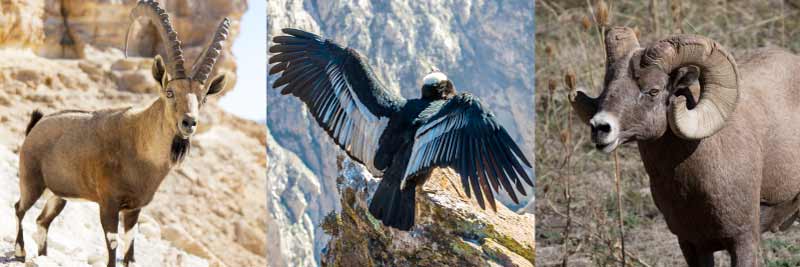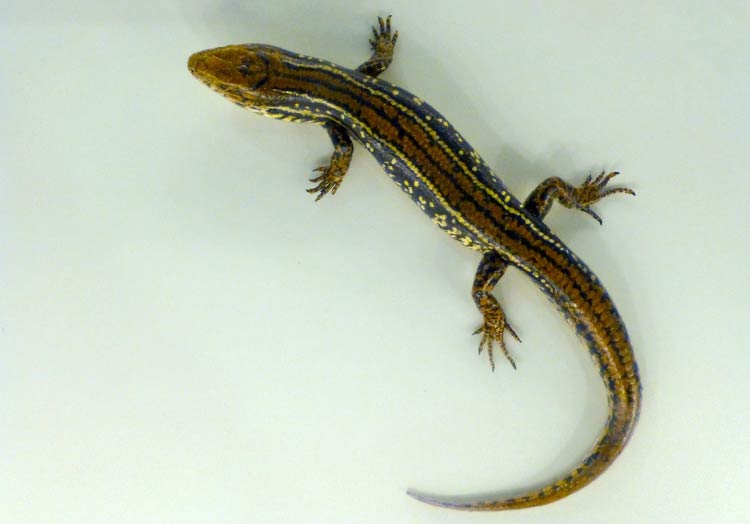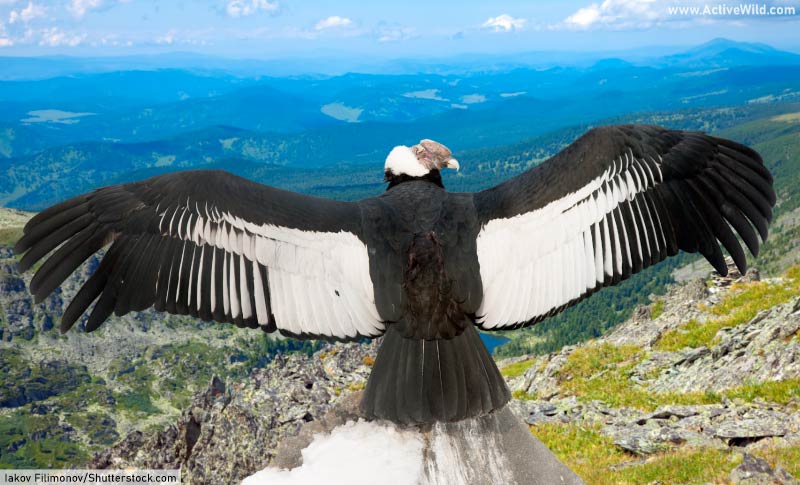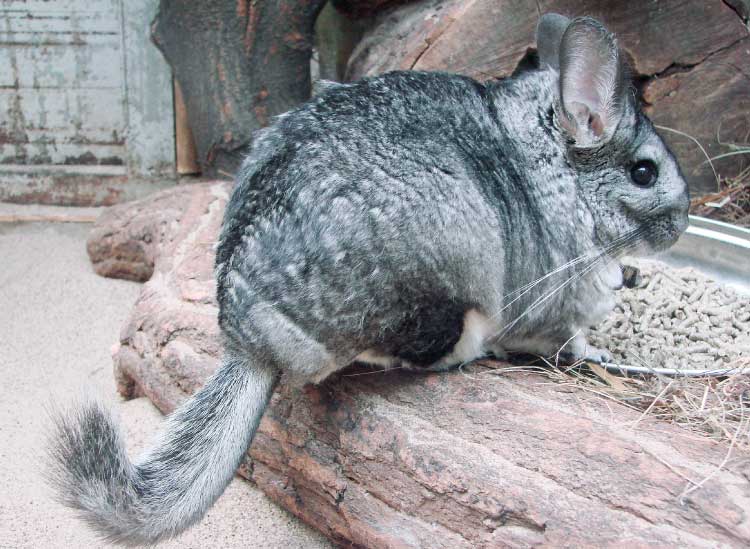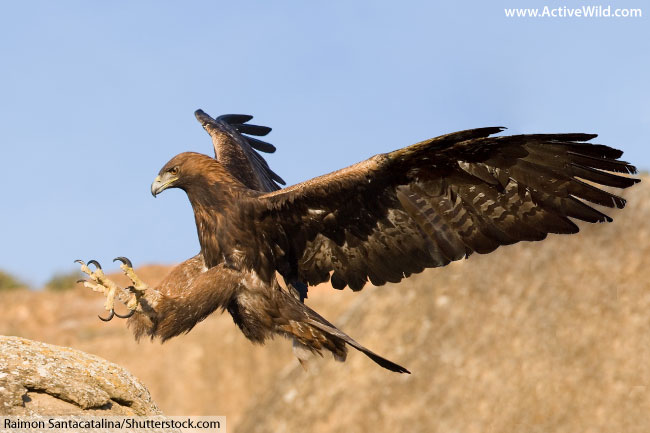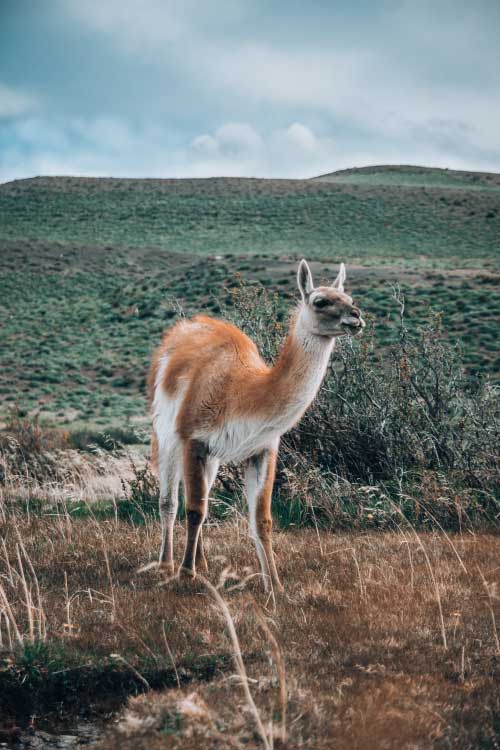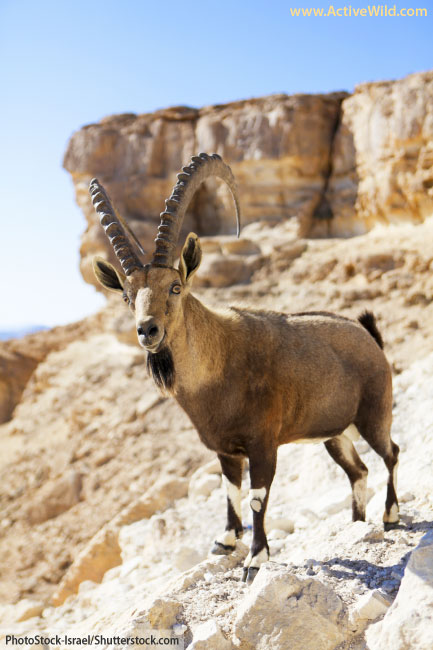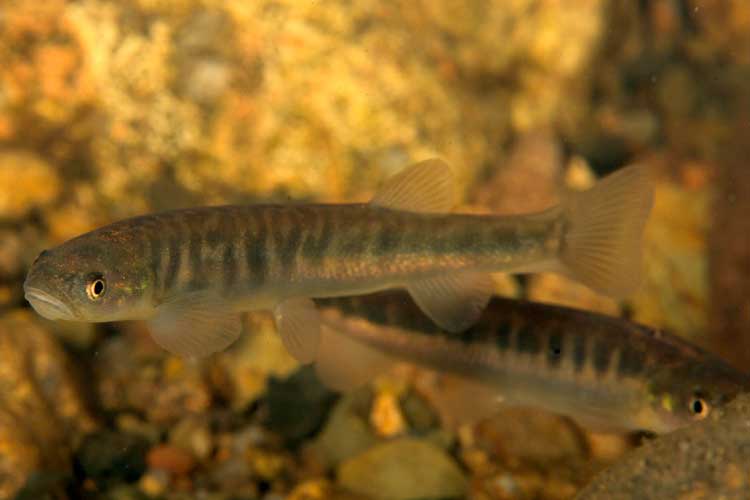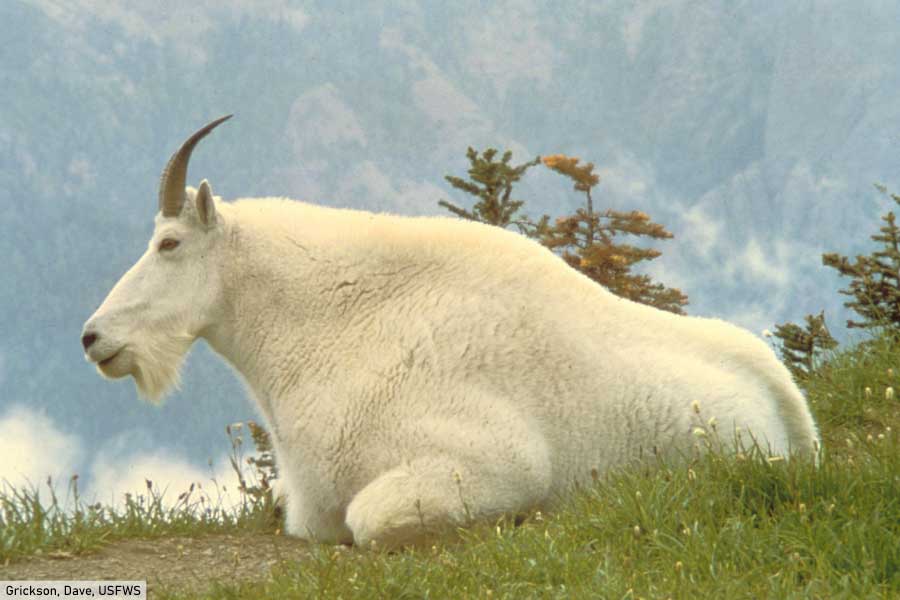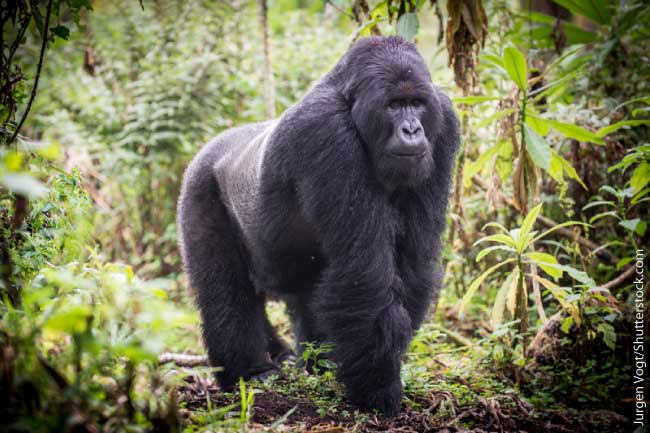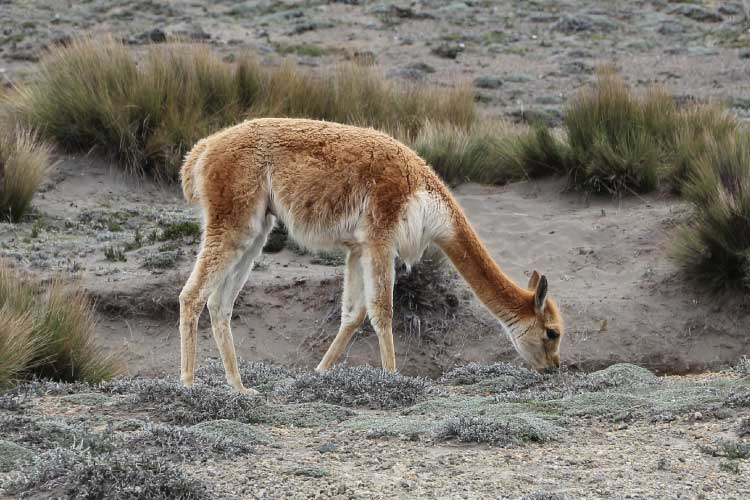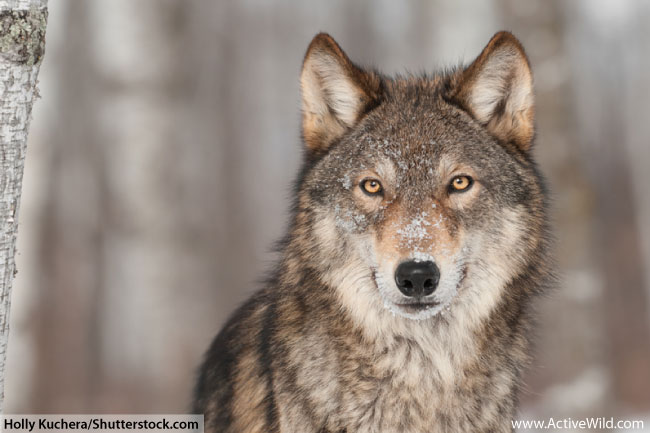Animals that live on mountains include the snow leopard, Andean condor, bighorn sheep, chamois, ibex, mountain goat, mountain gorilla, chinchilla, alpine marmot, lynx, golden eagle, Vicuña and Himalayan Tahr.
Mountain animals often have special adaptations for living in a cold, windy mountain climate. These include thick, multi-layered coats, modified feet for climbing or walking on snow, and seasonal migration or hibernation.
On this page is a list of mountain animals with pictures and facts. You can test your knowledge of mountain animals with a free printable worksheet. Discover amazing animals that live on mountains all around the world...
Animals That Live On Mountains: Page Index
- FREE Printable Worksheet (no log-in / sign-up required)
- Mountain Animals: Introduction
- List Of Animals That Live On Mountains
- Alpine Marmot
- Alpine Water Skink
- Andean Condor
- Baw Baw Frog
- Bighorn Sheep
- Bogong Moth
- Chamois
- Chinchilla
- Eurasian Lynx
- Golden Eagle
- Guanaco
- Himalayan Tahr
- Ibex
- L'Hoest's Monkey
- Mountain Galaxia
- Mountain Goat
- Mountain Gorilla
- Mountain Hare
- Snow Leopard
- Takin
- Verreaux's Eagle
- Vicuña
- White-Tailed Ptarmigan
- Wolf
- Wolverine
- Mountain Animals List: Conclusion
Free Mountain Animals Worksheet
Test your knowledge of mountain animals with this free printable question sheet. Click here or on the image above to download.
Mountain Animals: Introduction
Skip intro and go straight to list
Very few species are able to live on mountains; the climate on a mountain is typically cold and windy, and because the air pressure is lower at high altitudes, there is less oxygen available.
At 10,000 feet / 3,000 meters, you would need to breathe a third more air in order to take in the same amount of oxygen than you would do if you were at sea level.
As a result, animals that live on mountains often have special adaptations for living in this harsh environment.
This may mean higher amounts of body fat, or thicker coats with insulating inner layers. Some mountain animals hibernate during the winter; others migrate to lower elevations.
Mountain Zones
A mountain has three main zones: the montane zone, subalpine zone and alpine zone. Each has its own animal and plant species.
Conifers such as pines and spruces grow on the slopes of the montane zone. Their needle-like leaves, sloping branches and thick foliage allow them to grow even in areas which experience a heavy snowfall.
Above the montane zone is the subalpine zone. Here, fewer trees grow, and those that do are often stunted.
Above the tree line is the alpine zone. Here, only the hardiest plant and animal species can survive in the rocky, and often snow-covered terrain.
List Of Animals That Live On Mountains
Alpine Marmot
- Scientific name: Marmota marmota
- Type of animal: Mammal, Rodent
- Where found: Europe
- Conservation status: Least Concern
The Alpine marmot is a rodent in the squirrel family Sciuridae. It is found in the Alps and Tatras (a mountain range between Poland and Slovakia), and has also been introduced to the Pyrenees.
Growing to around 47 to 60 cm in length, the Alpine marmot is one of the largest marmot species. It lives in large family groups in elaborate burrows which may reach depths of up to 10ft. / 3m.
The Alpine marmot makes its own hay by drying grass on rocks in the sun, which it then stores in its burrow. The species hibernates during the winter.
Alpine Water Skink
- Scientific name: Eulamprus kosciuskoi
- Type of animal: Reptile, Lizard
- Where found: Australia
- Conservation status: Least Concern
Also known as the Alpine meadow skink, the Alpine water skink is a small Australian lizard. It is found in the Snowy Mountains, a mountain range in southeast Australia that forms part of the Australian Alps.
Growing to around 3.15 in. / 8cm in length, the species has a broad head and a black stripe running along its back.
Habitats in which the Alpine water skink is found include bogs, marshes and near streams in woodlands and heathlands. It preys on invertebrates such as insects and spiders.
Andean Condor
- Scientific name: Vultur gryphus
- Type of animal: Bird
- Where found: South America
- Conservation status: Near Threatened
The Andean condor is one of the biggest birds in the world. Its wingspan is around 283 cm (9 ft 3 in). Only four other birds – including the mighty wandering albatross – have a greater wingspan.
With an average weight of 25 lb. / 11.3 kg, the Andean condor is also one of the heaviest flying birds.
The Andean condor lives in the Andes mountain range of South America. It is a member of the new world vulture family Cathartidae.
Members of this family are not closely related to the old-world vultures, despite looking similar and having similar lifestyles.
Like other vultures, the Andean condor is a scavenger that feeds mainly on carrion.
This giant mountain bird can soar for 100 miles without flapping its wings, and only flaps its wings 1% of the time it is flying.
With an estimated adult population of only 6,700, the Andean condor’s conservation status is ‘Near Threatened’.
Baw Baw Frog
- Scientific name: Philoria frosti
- Type of animal: Amphibian
- Where found: Australia
- Conservation status: Critically Endangered
The Baw Baw frog is a critically endangered Australian amphibian found only on the Baw Baw plateau. This area of high ground forms part of the Great Dividing Range, a mountain range that stretches along the entire east coast of Australia.
The Baw Baw frog is a small brown and yellow frog with a maximum length of around 2.2 in. / 55 mm. It lives in leaf litter in shrublands and wetlands, where it feeds on worms and other invertebrates.
The exact reason behind the species’ decline in unknown. The most likely cause is that the frog is affected by an infectious disease caused by chytrid fungus. This fungus is also thought to have been responsible for the extinction of two other Australian amphibians: the southern and northern gastric brooding frogs.
Bighorn Sheep
- Scientific name: Ovis canadensis
- Type of animal: Mammal
- Where found: North America
- Conservation status: Least Concern
The bighorn sheep gets its name from its huge, curled horns, which can weigh up to 30lb / 13.6 kg on a large male. (The horns of the female are smaller and less curved.)
The species is found in rocky and mountainous regions of Canada, the United States and Mexico, including the Rocky Mountains and the Sierra Nevada mountain range.
During the mating season, the herd’s males fight to establish dominance, charging at one another at up to 40 mph, using their huge, curled horns as battering rams. The sheep’s skulls are reinforced to prevent serious damage.
The bighorn sheep uses its agility and excellent climbing ability to escape from predators, which include wolves, coyotes, Canada lynxes and bobcats.
Bogong Moth
- Scientific name: Agrotis infusa
- Type of animal: Insect
- Where found: Australia
- Conservation status: Unassessed
The Bogong moth is an iconic Australian insect known for its annual mass-migration to and from the Australian Alps.
The species spends the hot Australian summer in the mountains, gathered in large numbers in caves, crevices, and other areas of shelter. Here it enters a state of dormancy similar to hibernation known as aestivation.
During the autumn and winter the moth makes its way to lower ground, where it feeds and breeds.
The insect was an important source of food for Aboriginal people, who learned where the moths gathered during the summer.
Occasionally the migrating moths are blown off-course and end up ‘invading’ cities such as Canberra, Melbourne, and Sydney.
Chamois
- Scientific name: Rupicapra rupicapra
- Type of animal: Mammal
- Where found: Europe
- Conservation status: Least Concern
The chamois is a member of the subfamily Caprinae, a group of animals known as goat-antelopes. (Also within this subfamily are the true goats and sheep, but not antelopes.) It lives in alpine meadows in the mountains of central and southern Europe, and is also found in parts of Asia.
Female and young chamois live in flocks of between 5 and 30 individuals. The males are solitary.
This small hooved mammal was traditionally hunted for its skin, which was used to make chamois leather.
Chinchilla
- Scientific name: Chinchilla chinchilla (short-tailed chinchilla); Chinchilla lanigera (long-tailed chinchilla)
- Type of animal: Mammal
- Where found: South America
- Conservation status: Endangered
Chinchillas are rodents that live in rocky, arid habitats high in the Andes. Their fur is the densest of any land mammal; an adaptation for living in the mountains.
There are two species of chinchilla: the short-tailed chinchilla and the long-tailed chinchilla. The short-tailed species is the largest, with a body length reaching 49cm / 19 in. It has a shorter tail and smaller ears than the long-tailed species.
In the past the short-tailed chinchilla was hunted almost to extinction for its soft coat. The long-tailed chinchilla has also been hunted, mainly for the pet trade. Although chinchillas are now bred in farms for both the fur and pet trades, both species remain endangered in the wild.
Eurasian Lynx
- Scientific name: Lynx lynx
- Type of animal: Mammal
- Where found: Europe, Asia
- Conservation status: Least Concern
The Eurasian lynx is a mid-sized wild cat found in a wide range of habitats across Europe and Asia. It is present in several European and Asian mountain ranges, including the Carpathians, Alps and Himalayas.
The Eurasian lynx is the largest of the four lynx species. It has wide, furry paws for walking on snow without sinking. A nocturnal hunter, its preferred prey is ungulates (hooved animals) such as red deer and chamois.
- You can find out more about the Eurasian lynx on this page: Eurasian Lynx Facts
Golden Eagle
- Scientific name: Aquila chrysaetos
- Type of animal: Bird
- Where found: North America, Europe, Asia, Africa
- Conservation status: Least Concern
The golden eagle is a bird of prey found throughout the northern hemisphere. It is the most widely-distributed of all eagles, being found in mountainous regions of North America, Europe, Asia and north Africa.
The wingspan of the golden eagle is between 190 and 225 cm / 75 and 89 in. This majestic mountain bird preys on a variety of animals, including rabbits, hares, rodents and gamebirds.
When diving for prey, the golden eagle reaches speeds of 200 mph / 320 km/h making it one of the world’s fastest animals. The speeds reached by the golden eagle rival or even exceed those reached by the peregrine falcon.
Guanaco
- Scientific name: Lama guanicoe
- Type of animal: Mammal
- Where found: South America
- Conservation status: Least Concern
The guanaco is a member of the camel family Camelidae. It is closely related to the llama, a domestic species, and the vicuña, another wild camelid found in the Andes mountain range in South America.
The guanaco is larger than the vicuña. Reaching weights of up to 310 lb. / 140 kg and with a shoulder height of up to 51 in. / 130 cm, the guanaco is one of South America’s largest wild land animals.
With a growing population that currently numbers around 1 million adult individuals, the guanaco has a conservation status of ‘Least Concern’.
The main predators of the guanaco are the puma and the Andean fox.
Himalayan Tahr
- Scientific name: Hemitragus jemlahicus
- Type of animal: Mammal
- Where found: Asia
- Conservation status: Near Threatened
The Himalayan tahr is a large, goat-like, hooved mammal that lives in the Himalayas in China, India and Nepal. It inhabits rocky slopes and cliffs at elevations of up to 5,200 meters above sea level. During the winter it descends to lower elevations.
The species has a small head and backwards-facing horns. Its legs are relatively short, and its thick, red-brown fur provides insulation against the cold.
Other adaptations for mountain living include hooves with spongy, rubber-like pads for gripping onto smooth rocks. A harder outer rim prevents the hooves from wearing out on the rocky terrain.
Ibex
- Scientific name: All ibex species belong to the genus Capra
- Type of animal: Mammal
- Where found: Europe, Asia, Africa
An ibex is a mountain goat with long, backwards-curving, ridged horns. There are several species of ibex, including the Alpine ibex, found in the European Alps; the Nubian ibex of the Middle East; and the Bezoar ibex, found in Turkey, Iran and other Middle Eastern countries.
The Bezoar ibex is thought to be the ancestor of the domestic goat.
Ibex live in the alpine zone above the treeline, where they graze in alpine meadows. During the winter they make their way down to lower ground. They are most active during the day.
L'Hoest's Monkey
- Scientific name: Allochrocebus lhoesti
- Type of animal: Mammal
- Where found: Africa
- Conservation status: Vulnerable
Also known as the mountain monkey, L'Hoest's monkey is a primate in the old-world monkey family Cercopithecidae.
The species lives in the montane forests of the eastern Congo Basin. Countries in which it is found include the Democratic Republic of the Congo, Rwanda and Uganda.
L'Hoest's monkey lives in small troops which contain a single male and a number of females and young. The male makes loud calls to announce the troop’s position to other groups. The troop travels long distances on the forest floor, but makes its way into the trees to forage for food.
The species is threatened by growing human encroachment into its natural forest home. It is also hunted for meat by local people.
Mountain Galaxia
- Scientific name: Galaxias olidus
- Type of animal: Fish
- Where found: Australia
- Conservation status: Least Concern
The mountain galaxias is a small freshwater fish found in the rivers and streams of the Great Dividing Range in southeast Australia. It is the only Australian fish species found above the snowline in the winter.
In areas in which trout (a non-native species) have been introduced, numbers of mountain galaxias fall. When the non-native fish are removed, mountain galaxias return to the area.
Mountain Goat
- Scientific name: Oreamnos americanus
- Type of animal: Mammal
- Where found: North America
- Conservation status: Least Concern
The mountain goat is a North American hooved mammal. Despite its name, it is not a ‘true’ goat of genus Capra. However, like the wild goat, it is a member of the ‘goat-antelope’ subfamily Caprinae.
The species is found in the Rocky Mountains and the Cascades. Living up to its name, the mountain goat lives in the alpine zone above the treeline for most of the year.
Males reach weights of up to 140 kg / 309 lb., and are around 30% larger than females. Both males and females have slightly curved, black horns and beards, but those of the male are longer.
Predators of the mountain goat include the puma, wolf, brown bear and Canada lynx.
Mountain Gorilla
- Scientific name: Gorilla beringei beringei
- Type of animal: Mammal
- Where found: Africa
- Conservation status: Critically Endangered
One of the best-known, and most endangered, animals that live on mountains is the mountain gorilla. This large primate is a subspecies of eastern gorilla, one of two gorilla species (the other being the western gorilla).
The fur of mountain gorillas is thicker and longer than that of other gorillas; an adaptation for living at higher altitudes where temperatures are lower.
Like all gorillas, the mountain gorilla is mainly herbivorous. It eats a range of leaves, shoots and other foliage. Its diet also contains insects such as ants and termites.
There are two populations of mountain gorilla: one found in the Virunga Volcanoes; the other in Uganda’s Bwindi Impenetrable National Park. Although just 25km apart, the two populations are separated by human settlements.
The conservation status of both species of gorilla is Critically Endangered. Only around 1,000 mountain gorillas are thought to be left in the wild.
- You can find out more about the mountain gorilla on this page: Mountain Gorilla Facts
- Find out more about all gorillas on this page: Gorilla Facts
Mountain Hare
- Scientific name: Lepus timidus
- Type of animal: Mammal
- Where found: Europe; Asia
- Conservation status: Least Concern
Like all hares, the mountain hare is a member of the family Leporidae, which also contains rabbits.
The mountain hare is found in mountainous regions of northern Europe and Asia. Despite its name, it is not only found at high elevations: the species also inhabits taiga forests, tundra and coastal grasslands.
During the winter, the coats of mountain hares in most regions turn white. This provides camouflage in the snow. In areas that experience less snow, the hare may remain brown all year round. The tails of all mountain hares remain white even in the summer months.
The Arctic hare, found in North America, was once thought to be a subspecies of mountain hare. Today it is considered a separate species.
Snow Leopard
- Scientific name: Panthera uncia
- Type of animal: Mammal
- Where found: Asia
- Conservation status: Vulnerable
No list of mountain animals would be complete without the snow leopard. This iconic animal is found in mountainous areas across a wide area of Central and southern Asia, including the Himalaya and Altai mountain ranges.
Being a member of the genus Panthera, the snow leopard is considered to be a ‘big cat’, although the puma, a member of the ‘small cat’ subfamily Felinae, is larger on average.
The snow leopard is a solitary animal. It keeps in contact with other snow leopards via scent markings.
Wild goats and other caprids, such as the Himalayan tahr and ibex, form the majority of the snow leopard’s prey.
- You can find out more about the snow leopard on this page: Snow Leopard Facts
Takin
- Scientific name: Budorcas taxicolor
- Type of animal: Mammal
- Where found: Asia
- Conservation status: Vulnerable
The takin is a large hoofed mammal in the subfamily Caprinae, a group of animals known as goat-antelopes. It is found in the eastern Himalayas, where during the summer it inhabits forests and grassy mountain slopes near the treeline. During the winter it migrates to lower ground, but rarely to elevations of lower than 1,000m / 3,281 ft.
The species usually lives in small herds of around 20 individuals, but in summer will congregate in groups of around 300 individuals.
This herbivorous mountain animal feeds on grasses, bamboo shoots, leaves and other vegetation.
The snow leopard is a known predator of the takin.
Verreaux's Eagle
- Scientific name: Aquila verreauxii
- Type of animal: Bird
- Where found: Africa
- Conservation status: Least Concern
Also known as the black eagle, Verreaux's Eagle is a large bird of prey. If belongs to the genus Aguila, members of which are known as the ‘true’ eagles.
This mountain bird inhabits rocky, mountainous areas of southern and central Africa, and may be found up to 16,400 ft. / 5,000m above sea level. The species is also found in desert, scrubland and savanna habitats.
The main prey of the Verreaux's Eagle is the rock hyrax, a small to medium-sized, rodent-like animal. The rock hyrax forms at least 60% of the eagle’s diet.
Vicuña
- Scientific name: Vicugna vicugna
- Type of animal: Mammal
- Where found: South America
- Conservation status: Least Concern
The vicuña is a member of the camel family Camelidae found in the Andes. It lives above the treeline in the alpine zone.
During the day the vicuña makes its way to a ‘bofedale’ – a high-altitude wetland that forms around a pond or stream. Here it can eat and drink. At night the vicuña retreats to higher ground to avoid predators.
The main predators of the vicuña are the puma and the culpeo fox.
White-Tailed Ptarmigan
- Scientific name: Lagopus leucura
- Type of animal: Bird
- Where found: North America
- Conservation status: Least Concern
The white-tailed ptarmigan is the smallest member of the grouse family, Phasianidae. This crow-sized bird is found in mountainous regions of North America. It lives above the treeline in the summer, descending to lower elevations during the winter.
The species has a number of adaptations for living on mountains. During the winter, its plumage is entirely white for camouflage in the snow. In the summer, its plumage becomes intricately-patterned for camouflage among the rocks. Its feet are feathered for insulation.
Unlike other ptarmigans, the white-tailed ptarmigan’s tail remains white for the whole year.
Wolf
- Scientific name: Canis lupus
- Type of animal: Mammal
- Where found: North America, Europe, Asia
- Conservation status: Least Concern
The wolf is the largest member of the dog family Canidae. It is found in many different habitats, including mountains and rocky peaks.
Wolves are pack animals that hunt and defend themselves cooperatively. A pack of wolves can see off a black bear or a puma, and can bring down prey animals as large as a moose or bison.
Most of a wolf’s prey is located by scent; although a wolf’s eyesight is around the same as a human’s, its sense of smell is 10,000 times more sensitive.
- You can find out more about the Eurasian wolf on this page: Eurasian Wolf Facts
Wolverine
- Scientific name: Gulo gulo
- Type of animal: Mammal
- Where found: North America, Europe, Asia
- Conservation status: Least Concern
The wolverine is a member of the weasel family Mustelidae. It is found in taiga forests and subarctic regions of North America, Europe and Asia. The species rarely ventures below 300m / 984 ft., and may be seen at elevations of up to 2,400m / 7,874 ft.
Looking like a small bear, the dog-sized wolverine has a reputation for toughness beyond its size. Although it does take its own prey, much of its food comes from scavenging the kills of other predators. It is known to cache surplus food.
- You can find out more about the wolverine on this page: Wolverine Facts
Mountain Animals List: Conclusion
On this page we’ve listed a number of animals that live on mountains, and found out about the adaptations necessary to survive in this harsh environment. There are many more mountain animals than those listed above and we’ll be adding new species to this page regularly.
What’s your favorite mountain animal? Have you ever seen any of the animals on this list? Let us know in the comments section below…


